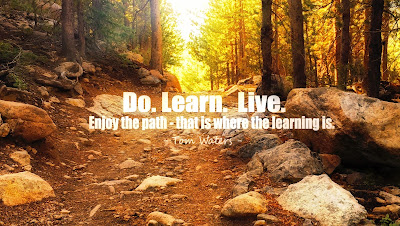Visible Learning: Is Hattie's Top Strategy in Your School?
It is the strategy, approach, and set of techniques that can unleash the largest results in student learning. Its name is vague and uncertain. It comes from the research in John Hattie's Visible Learning.
At the top of Hattie's research is a simple instructional strategy called, student visible learning. But what is it? What should we look for in our schools and classrooms to ensure it's happening?
Are we designing curriculum and instructional materials that embed visible learning techniques for teachers and students to use?
Are we building systems of support and development to increase the use of this powerful instructional strategy?
Student visible learning is the set of strategies teachers use to help students gain ownership of their own growth. These strategies increase student awareness of the next steps they need to take in their own learning.
Visible learning increases students' expectations of themselves. It helps them evaluate the learning strategies they are using. Then students are able to better use the instructional feedback they receive. These are the strategies that increase student understanding of learning tasks and their progress toward learning objectives.
TeamTom Education provides dozens of strategies, but here are a few school leaders will need to know:
At the top of Hattie's research is a simple instructional strategy called, student visible learning. But what is it? What should we look for in our schools and classrooms to ensure it's happening?
Are we designing curriculum and instructional materials that embed visible learning techniques for teachers and students to use?
Are we building systems of support and development to increase the use of this powerful instructional strategy?
Visible Learning: The Big Picture
How do we help students become their own teacher? Helping them to see their learning and make the best choices about how to learn? That is visible learning.Student visible learning is the set of strategies teachers use to help students gain ownership of their own growth. These strategies increase student awareness of the next steps they need to take in their own learning.
Visible learning increases students' expectations of themselves. It helps them evaluate the learning strategies they are using. Then students are able to better use the instructional feedback they receive. These are the strategies that increase student understanding of learning tasks and their progress toward learning objectives.
6 Visible Learning Look-Fors
Here is a quick list of techniques that instructional leaders can expect to find when visible learning is in the classroom:- A focus on learning and growth. Evident by conversations, visual reminders, and engaging tasks.
- Aligned learning targets with accompanying ways to demonstrate learning.
- Metacognitive strategies such as reflection and discussions about learning strategies.
- Student self-evaluation during conversations, in writing, using rubrics, and in other tools.
- Decisions about learning. Deciding what feedback is needed. Deciding how to use the feedback.
- Students are increasingly aware of what, how, and why they are learning.
- Content is important, but there is also evidence that students are also learning "strategies for learning".
A Visible Learning Strategy How To for Teachers
TeamTom Education's blog has an excellent post on visible learning strategies for teachers. Student Visible Learning can be thought of having three distinct aspects: the task, the process, and the reflection.TeamTom Education provides dozens of strategies, but here are a few school leaders will need to know:
The Learning Task
- Frame learning targets around how they will be demonstrated. Give examples at the outset of learning.
- Engage students in discussing the learning goals before and during learning.
- Student expectations are important. Students should talk about what they think they can do before instruction.
Making the Learning Process Visible
- Instruction pauses, and the teacher models good learning habits. The teacher explains how good learners think about learning strategies.
- Students are prompted to talk about the steps needed in their learning. They talk about what they need to do next to reach the learning target.
- The teacher explains different learning strategies and asks students to understand which strategy they are currently using.
Student Reflection
- Help students become aware of their own expectations in each learning task by asking, "What do you think you can do? Where do you think you'll be challenged? What is going to be frustrating?"
- Use self-evaluation for students. Rubrics, learning scales, and checklists are frequently used by students before, during, and after instruction - and not just for projects and writing.
- Students should be able to see growth during one setting of instruction when using self-evaluation. Have them reflect on that growth. What worked for them? What can they do to make it better next time?





Great Post with valuable information. I am glad that I have visited this site. Share more updates.
ReplyDeleteSpoken English Classes in Porur
Spoken English Classes In Chennai Velachery
Visible Learning is such a powerful framework, and Hattie’s work really challenges educators to reflect on what strategies genuinely make an impact. The emphasis on feedback, teacher-student relationships, and clear learning intentions feels especially relevant in today’s classrooms. It’s interesting to see how schools adopt these strategies differently, depending on culture and resources. Implementing the “top” strategy isn’t just about knowing what works but also about adapting it to context. As someone exploring evidence-based approaches, I find parallels with research work—much like seeking phd thesis writing help, clarity and focus determine the ultimate success of learning outcomes.
ReplyDelete